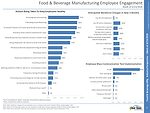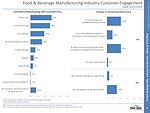Crisis communication
Effective communication during the COVID-19 pandemic
Keeping workers and customers informed is critical to success




As the COVID-19 pandemic has processors scrambling to ensure they can meet a sustained surge in demand while keeping their employees safe, crisis communication plans are a critical component of an effective response strategy.
Processors are implementing and reinforcing policies to keep employees safe, such as performing temperature checks before shifts start, revamping break schedules and areas to allow for social distancing and stressing the importance of handwashing and sanitation. They are also sharing information with their customers on availability and what they’re doing to keep workers and customers safe.
Research from Clear Seas Research, a division of BNP Media, shows how processors are responding to the pandemic. More than 90% are encouraging hand washing, 86% are promoting social distancing, 85% have increased the frequency of cleaning/sanitization procedures and 80% are providing hand sanitizer and/or antibacterial soaps. Most processors (95%) are using email to communicate with employees, while 66% are using text messaging.
When it comes to communicating with customers, communicating their availability and sharing what they’re doing to keep workers and customers safe were both cited by 41% of respondents. The most common communications tool used is phone calls (57%), followed by email (53%) and social media (37%).
This communication to both employees and customers is critical during a crisis situation, says Edward Segal, crisis management expert and author. (Segal is the author of the upcoming book “Crisis Ahead: 101 Ways to Prepare for and Bounce Back from Disasters, Scandals, and Other Emergencies.” His template for a crisis management plan can be requested by emailing edwardsegalcommunications@gmail.com. Visit his website at www.publicrelations.com.)
Keeping the lines of communication open can be the difference between effectively managing your workforce and having a walkout or work stoppage on your hands, as have been seen at certain processing plants or retail stores as employee frustration has boiled over.
Keeping the lines of communication open can be the difference between effectively managing your workforce and having a walkout or work stoppage on your hands.
“Talk to your people,” says Segal. “They’re telling you on television, in interviews, with protests and walkouts, their concerns. Do a reality check and make sure you are fully in tune with your people.”
Segal points out that even companies that have crisis management plans may not have tested them or tested them strenuously enough, which leads to having to make decisions on the fly. While that’s always required during a crisis situation, processors should try to get out in front of issues as much as possible to make sure employees understand what the company is doing and why.
That extends beyond what processors are providing from shift to shift to help keep workers safe. A number of processors are offering bonuses or other rewards to employees. They’re also focusing on adapting training to shore up health and safety efforts or bring on new employees to help meet demand. In the longer view, 25% of respondents say they anticipate some layoffs in the next three months, 22% say they expect to hire more employees and 23% anticipate no change.
Regardless of what processors are doing or planning to do now or in the near future, communicating it well to both employees and customers is important, says Segal.
“Don’t sugarcoat it. Don’t lie. Honesty is the best policy. Tell them exactly what you’re doing and why, and make sure that if they have any questions, you get back to them right away.”
As Segal puts it, you should try to manage expectations for both employees and customers in a straight line, not a zig-zag. There will be times when you have to change course due to circumstances changing, but that can be managed effectively. Constantly changing plans and flip-flopping back and forth with no clear strategy cannot.
This becomes especially important when it comes to explaining to employees what you’re doing to protect them and reward them for their work during a crisis situation. Segal recommends what he calls a Pandemic Bill of Rights, which lays out what employees can expect from company leadership, how it will be communicated, who they can contact with questions and other information that helps employees understand how challenges will be navigated. Don’t speculate or project, but stick to the facts of what you know and what you don’t know.
“Be honest with them,” says Segal. “Put it in writing. Make a commitment to them and to the public of what you’re doing, why you’re doing it, how it will be done and how long it’s going to be done.”
The bottom line is that effective operation during a crisis situation, especially one that brings with it a surge in demand, puts a lot of strain on employees, managers and company leadership. Clear and consistent communication of what the company needs, how it is meeting those needs and how employees fit into each part of the strategy helps workers understand their role and how the company is supporting them.
“Your assets walk out the door every night,” says Segal. “These are the people who help run the business, and you need to treat them right if you expect them to stay and do a good job. Eventually this crisis will be over, and how you treat them now will leave a good or bad taste in their mouth, and that will determine whether they want to stay or they want to leave.”
Clear Seas Research. 2020 Food & Beverage Mfg. Industry Perspective — Week of 3/23/2020, March 2020.
Clear Seas Research is a full service, B-to-B market research company focused on making the complex clear. Custom research solutions include brand positioning, new product development, customer experiences and marketing effectiveness solutions. Clear Seas offers a broad portfolio of primary, syndicated research reports and powers the leading B-to-B panel for corporate researchers, myCLEARopinion Panel, in the architecture, engineering, construction, food, beverage, manufacturing, packaging and security industries. Learn more at clearseasresearch.com.
To download the full report for free, visit: https://www.clearseasresearch.com/product/food-and-beverage-industry-perspective-on-the-challenges-of-today/
Looking for a reprint of this article?
From high-res PDFs to custom plaques, order your copy today!








